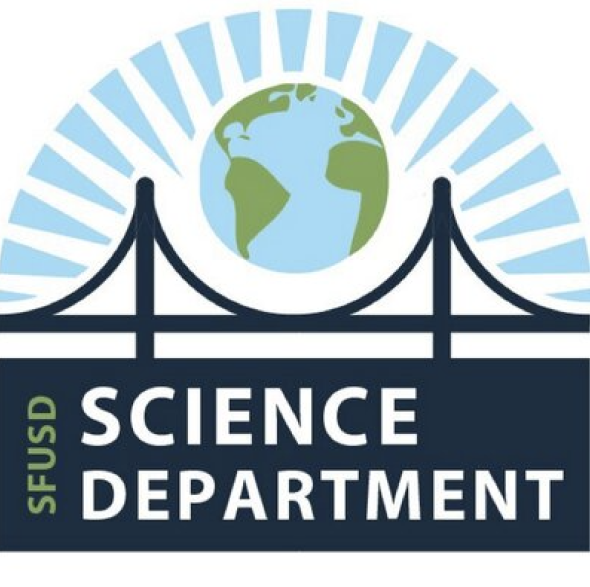
Overview
Fifth-grade students in SFUSD do, talk, read, and write to figure out how the world works. They engage in one hour of science instruction four times a week, starting with a five-lesson launch unit, then four 22-lesson content units. Alternate with history/social studies units throughout the year.

Students initiate science identities and foundational skills in Launch Unit 0, and then build on them and their content knowledge in the life science, physical science, and earth and space science units that follow.
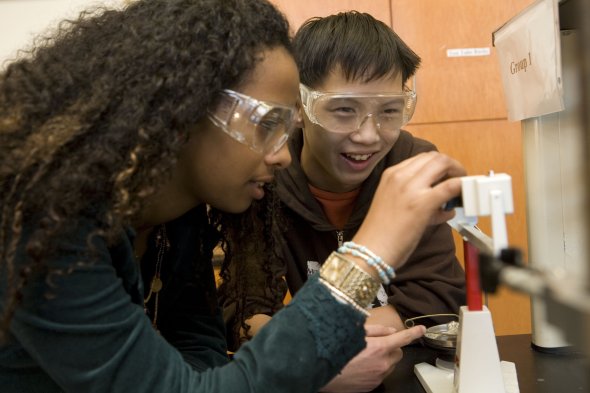
Prioritize using science to model a sense of awe and wonder about the natural and designed world, and guide students to ask questions, conduct investigations, and use their observations, data, and text to construct explanations and design solutions to problems.
Priority Standards Link to this section
What students will know, what students will do, and what thinking skills students will develop to apply and transfer scientific understandings that endure within the discipline, leverage deeper understandings, and/or support readiness for success at the next grade level. These are the standards that should anchor and drive instruction.
In fifth grade, focus on these critical areas:
Sciences & Engineering Practices
SEPs are behaviors scientists and engineers engage in to figure out and deepen their understanding of content. Fifth graders predominantly practice:
- Asking questions based on observations about the natural or designed world(s)
- Developing and using models to make sense of science concepts
- Planning and carrying out investigations with guidance and peer collaboration
- Analyzing and interpreting data to describe patterns
- Designing solutions to solve specific engineering problems
Disciplinary Core Ideas
DCIs are the fundamental scientific ideas in the four domains: Life, Physical, Earth & Space Science, and Engineering.
(Continue to view the disciplinary core ideas students figure out through the four fifth-grade science units.)

I Am a Scientist
Scientists observe, wonder, collaborate, and record their thinking in science notebooks. (5-lesson launch unit)
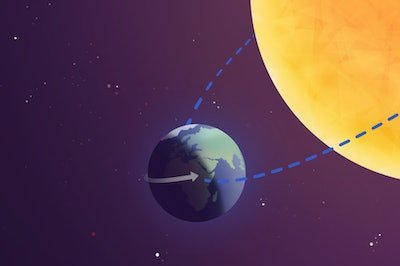
Earth & Space Science: Patterns of Earth and Sky
Stars are all around us and vary in distance. The Earth’s spin and orbit determine which stars we can see.
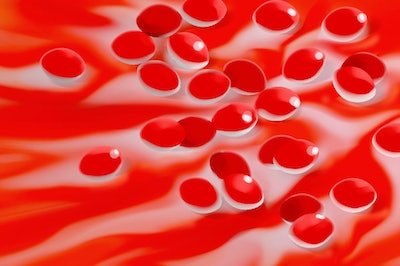
Physical Science: Modeling Matter
Matter is made of particles too small to see, but the type of matter can be detected when we understand the properties of its molecules.
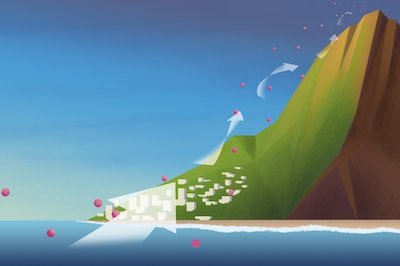
Earth Science: The Earth System
The geosphere, biosphere, hydrosphere, and atmosphere interact and affect the distribution of rainfall.

Life Science: Ecosystem Restoration
Organisms in an ecosystem need matter and energy to survive. A healthy ecosystem is one in which multiple species are able to thrive.
Crosscutting Concepts
CCCs are thinking tools that help students connect the ideas they are learning to ideas used across all domains of science. Questions that guide fourth graders to think across domains include:
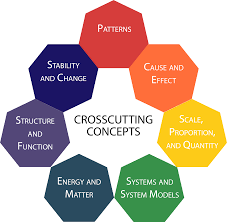
Crosscutting Concepts
- Patterns: Why is the sun up sometimes, but not other times? (Patterns of Earth and Sky)
- Scale, Proportion, & Quantity: How does your model show three different kinds of dye molecules? (Modeling Matter)
- Systems & System Models: Where does water vapor in the air come from? (The Earth System)
- Energy & Matter: How do otters get the molecules they need to grow? (Ecosystem Restoration)
Instruction: Signature Elements Link to this section
Below are signature elements of SFUSD Science instruction that students should experience regularly throughout fifth grade as they develop as scientists.
Approach to Learning in Every Amplify Unit
- Engage in a Real World Problem
- Collect Evidence from multiple sources (through doing, talking, reading, writing, and visualizing)
- Construct Increasingly Complex Explanations
- Apply Knowledge to Solve a Different Problem
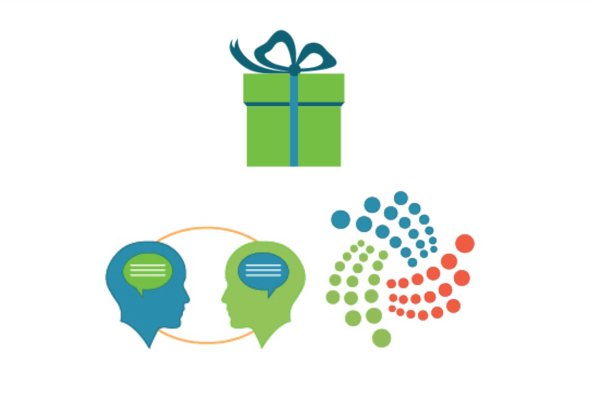
Science Norms
- Mistakes help us grow
- We talk to each other about science
- We can show science and engineering ideas in different ways
Science Notebooks
Science notebooks are a valuable thinking tool. They allow students to construct their understanding over time through drawing and writing, share their thinking with others, and develop language skills. They act as a storehouse for student observations, questions, and ideas throughout the year!
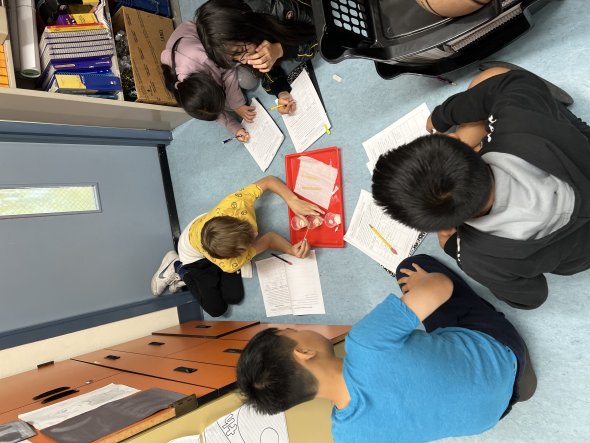
Collaboration
As scientists and engineers, fifth graders work with others while doing science. They carry out investigations, read and talk about science in pairs so that they can construct knowledge and develop language collaboratively.
Materials
Below are items you should have to support your students' science instruction. If you are missing anything from the list, please first contact your site administrator or designated support. If they are unable to resolve the issue promptly, please contact Renee Marcy from the SFUSD Science Team.
Every fifth-grade classroom has four science units that have kits of materials. Each kit has: (1) a set of consumable items for student use that will be all used up during the unit. The consumable materials are replaced yearly through a spring ‘Refill Pack’ order process; and (2) a set of permanent items that are the kit's contents that remain with the kit and are only replaced if they are missing or broken. In addition, every classroom teacher has additional essential teaching materials through the Amplify digital platform. The Amplify digital platform can be accessed from the SFUSD Science Portal.
|
|
|
|
|
|
|
|
|
|
Budget permitting, the Science Department will replace science materials annually for each kit through an order process. Contact your Science Lead for more information.
If you are missing materials, refer to the Materials FAQ for guidance.
The Fifth-Grade Science Core Curriculum consists of three resources
|
|
|
|
|
|
|
|
|
|
|
|
Units
The opening science unit, Launch Unit 0, is five short lessons that support students to begin to build science identities and to use a science notebook. The three subsequent science units are intended to engage fourth graders in a minimum of 60 minutes of science instruction four times a week. Each unit has 22 lessons that follow a single storyline. (Sometimes a lesson may take place over a few days.) Students build on their science identities and expand content knowledge in the life science, physical science, and Earth & space science units. Click on the videos below for a six-minute unit overview, or access the unit resources and documents in the unit links column.
Additional science unit materials and resources are available on the SFUSD Science Portal.
| Unit | Description | Video |
|---|---|---|
|
I Am a Scientist |
The opening science unit, Launch Unit 0, is five short lessons that support students to begin to build science identities and a science community, and to use a science notebook. |
|
|
Patterns of Earth and Sky |
Students take on the role of astronomers to figure out and explain the significance of the illustrations on a thousand-year-old artifact. Students develop an understanding of scale and distance in the universe. | |
|
Modeling Matter |
As food scientists, students investigate a potentially hazardous food dye and create a tasty salad dressing that doesn’t separate. Students dive into the particulate nature of matter to explain what we can observe. | |
|
The Earth System |
In the role of water resource engineers, students investigate what makes a city on one side of an island prone to water shortages, while a city on the other side is not. Students explore how parts of the Earth System interact. | |
|
Ecosystem Restoration |
Students take on the role of ecologists to figure out how to return a rainforest ecosystem to its original healthy state. Students explore what it means to grow and how living things get the energy and matter they need to grow. |
Planning Guide
The Science Team suggests trying to stay as close to this schedule and teaching science 4 days a week for 60 minutes, or teach 5 days a week to allow more time for three alternating History/Social Studies units.
|
|
|
|
|
|
|
|
|
|
|
|
|
|
|
|
|
|
Reflection Questions Link to this section
- How are students' developmental needs, communities, and experiences being reflected and honored, or how could they be?
- What opportunities do you see for developing equitable access & demand, inquiry, collaboration, and assessment for learning?
- What are the implications for your own practice? What strengths can you build upon? What will you do first?
Want More?
Standards
More Resources
- Check out the many resources for each of the Fifth-Grade Science Units on the SFUSD Science Portal
Contact the Science Team
- Anastasia Pickens - Elementary Science Content Specialist (2-5)
- Claudia Scharff - Elementary Science Content Specialist (K-1)
- Dr. Renée Marcy - Supervisor for Science; phone: (415) 298-8201
This page was last updated on May 17, 2023

